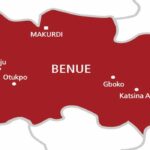In one of the episodes of the American sitcom, “Big Bang Theory,” Sheldon, the genius, is looking for an additional friend to achieve a certain objective, but according to Leonard, one of the handful of friends he already has, he is going about it the wrong way. You can’t make friends by reading books and theorizing, Leonard tells him, you make friends by going to the coffee shop and talking to people.
Then Leonard reminds Sheldon how he learned to swim from the internet.
Leonard: All I’m trying to say is that maybe you can’t approach this purely as an intellectual exercise.
Sheldon: What do you mean?
- THE BEARING: Why Society Sees People With Locs, Tattoos Differently
- Malleri: Gombe community ravaged by hippos
Leonard: Remember how you tried to swim using the internet?
Sheldon: I did learn how to swim!
Leonard: On the floor!
Sheldon: The skills are transferable. I just have no interest in going in the water.
Leonard: Then why learn how to swim?
Sheldon: The ice caps are melting, Leonard. In the future, swimming isn’t going to be optional!
And so from the mouth of a comedian comes the hard truth: the ice caps are melting!
Climate change is real. Global temperatures are rising. By the time it gets four degrees higher, we will all be in serious trouble because then, it will be irreversible. But even with two degrees, the effect is catastrophic. PBS explains:
“This 2-degree warmer world still represents what scientists characterize as a profoundly disrupted climate with fiercer storms, higher seas, animal and plant extinctions, disappearing coral, melting ice, and more people dying from heat, smog, and infectious disease.”
But how will the irreversible change occur?
“One study suggests losing 40 per cent of the forest or crossing 7.2 °F (4°C) of warming could cause permanent, irreversible change,” National Geographic reported in August 2021.
How much time do we have?
It can be as soon as the next five years! “The threshold for dangerous global warming will likely be crossed between 2027 and 2042, research indicates.” World Economic Forum wrote in a January 2021 report.
You can see where you come in. The report says that when we lose 40 percent of the forest, we’re going to reach the point of no return. Why are forests important in the scheme of things? It’s because a tree can store (sequester) 22 KG of carbon. So by planting trees, you’re helping the environment to be sustainable for ourselves and great-grandchildren.
Two, having a food forest is a source of wholesome food for your family. Not only that, you’re helping farmers in three ways. We’ll return to this in another chapter.
Three, it’s therapeutic. Have you heard the story of forest bathing in Japan?
What is forest bathing?
“In 1982, the Japanese Ministry of Agriculture, Forestry, and Fisheries created the term shinrin-yoku, which translates to “forest bathing” or “absorbing the forest atmosphere.” The practice encourages people to simply spend time in nature — no actual bathing required,” Kaiser Permanente wrote.
What are the benefits of forest bathing?
In a 2019 academic paper, Akemi Furuyashiki and colleagues wrote: “Studies have found that “forest bathing” (Shinrin-yoku) has positive physiological effects, such as blood pressure reduction, improvement of autonomic and immune functions, as well as psychological effects of alleviating depression and improving mental health.”
With your food forest, you don’t need to go to Japan, or any forest for that matter, to have a forest bath. You only need to step into the backyard and absorb all the benefits. I do that every day in my house. So do my friends and customers for whom I planted food forests.
Also, during the COVID-19 pandemic, neighbors came to my house in Minna to take leaves from the trees to treat the flu. It’s customary for our people to use leaves from neem, guava, citrus, and papaya trees to treat the common cold, therefore, they extrapolated that to COVID-19. And that solution appeared to be quite therapeutic.
You can also make money. The bonus reason for having your food forest is the fact that you can make money from it—a lot of money. There are two ways of making good money from your trees, and you’re already familiar with one of them. But there’s something you can sell from your trees that is even more profitable than the fruits. I will tell you more about that in the following pages. You’ll also learn the cost-effective way to start, how to minimize water use and how to get your trees to blossom quickly.
I’ll also show you pictures of the food forests I’ve planted for my customers—some of which started yielding fruits in as little as one year.
PS: This is the introduction to the book, “$100 Food Forest” by Ibraheem Dooba

 Join Daily Trust WhatsApp Community For Quick Access To News and Happenings Around You.
Join Daily Trust WhatsApp Community For Quick Access To News and Happenings Around You.


